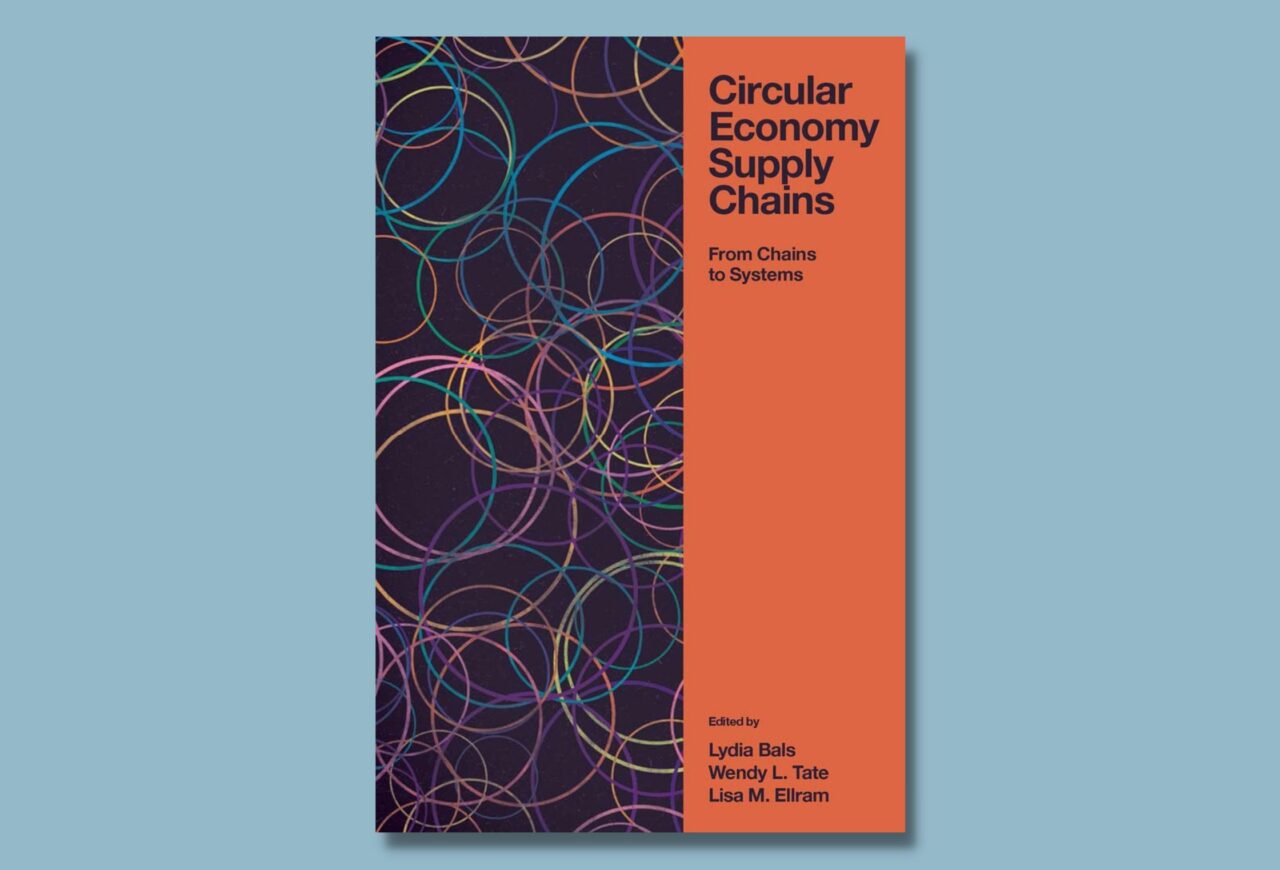This valuable research book, edited by Lydia Bals, Wendy Tate and Lisa Ellram, presents a collection of essays by the brightest and the best in supply management thinking, writes Christopher Walker

In brief
- As climate change drives the need for greater resilience, supply chain reform is imperative
- Solutions are being undertaken, but it’s a patchwork quilt
- Blockchain digital ledgers and smart contract use may prove important going forwards in tracing supply chain effects
This valuable research book was partially funded by the Deutsche Forschungsgemeinschaft, the German Research Foundation. So it is no surprise that we are treated to the musings of some of the brightest minds at German universities.
But there are also plenty of other contributors from Aalborg to Zagreb. Indeed, just about anyone senior who has ever written about supply chains is in here somewhere. Especially if you’re a woman. A nice touch.
The editors describe a circular economy as one “based on the foundational principles of designing out waste and pollution, keeping products and materials in use, and regenerating natural systems. This goes beyond recycling, moving to a new way of thinking about growth without dramatically expanding resource consumption”.
Much of the work contained in this book is refreshingly cutting-edge, though the general reader might wish to avoid the more academic essays. My eyes glazed over when presented with an Einsteinian page of calculations starting with ∑ (i, j) ∈A (hx ij ij + fij yij).
And there are way too many abbreviations such as BM, CE, IS, OBM, SCM, CSC and DEA. I stopped counting when I got to 25. As Elizabeth Miller tells us in her essay “there is no rest for the complex”. Indeed.
The problem
But the problem they are tackling is an important one. Jennifer Rogan et al of Copenhagen Business School sum up: “Even before the COVID-19 pandemic brought our collective attention to the vulnerabilities of a tightly connected, globalised system of production, it can be argued that the warning signs were in place.”
They note that by 2020, the resource demand of human activity had grown to be equivalent to 1.6 planet Earths. “Indeed, from 1970 to 2020, as the global economy grew 4-fold and global trade 10-fold, there has been an observed decline in the ecological life-support systems that industry depends upon. Globally, land degradation has reduced productivity in 23% of the terrestrial area; 33 % of fish stocks are overfished; one million species face extinction.”
Research by the World Economic Forum has shown that more than half of the world’ s total GDP is dependent upon ecosystem services and therefore exposed to such nature loss. With much of this dependency “ hidden” in supply chains.
As McKinsey state it has become apparent that these “intricate production networks were designed for efficiency, cost, and proximity to markets but not necessarily for transparency or resilience”. Total direct economic damage and losses from natural disasters reached $2.98 trillion in the decade 2010 – 2019, with significant supply chain disruptions resulting from extreme weather events.
Rogan concludes: “In adaptive cycle terms, this suggests vulnerability in the system…as connectedness and potential have built up across global supply chains.”
The solution – transition to a circular economy
“The circular economy has the potential to transform the economy’s traditional linear logic, which is usually based on the take – make – dispose principle, toward circular value chains and more sustainable resource consumption,” according to Katharina Spraul and Stephanie Stumpf.
Consumers themselves are driving change as outlined by Ben Hazen et in a different essay: “Leading sustainable organisations are using consumer-centric CE models to redesign their supply chain processes. Rather than focusing strictly on consumption, these organisations seek to design value creation systems that support a more holistic view of people’ s lives. Moving closer to the state of a balanced natural ecosystem.”
Research suggests that over half of supply chain management professionals expect to increase their focus on CE strategies over the next two years. And there are good examples throughout this book such as Adidas’s work manufacturing sports shoes and footwear from recycled materials.
But it’s also a patchwork quilt. European readers will be intrigued by Tihana Škrinjarić’s work ranking countries. As she says “the results indicate the following. On average, the most efficient countries were … the Netherlands, Poland, Germany, Sweden, Denmark, France, and the United Kingdom. The worst performing ones were Cyprus, Spain, Greece, Belgium, Portugal, and Croatia.”
Use of the blockchain is vital
Hope may lie in technology. One of the most intriguing essays is Mahtab Kouhizadeh et al’s exploration of ‘Blockchain Technology and the circular Economy.’
She notes: “Smart contracts and the cryptocurrency tokens of blockchain can facilitate incentivising stakeholders to adopt CE [circular economy] practices.” Smart contracts can generate an automatic payment in forms of cryptocurrency when customers return a recyclable wastes. “The circular flow of information on blockchain can facilitate demand management, as well as return management – from source to buyers and reverse. All these information and records can facilitate CE performance measurement,” she concludes.






